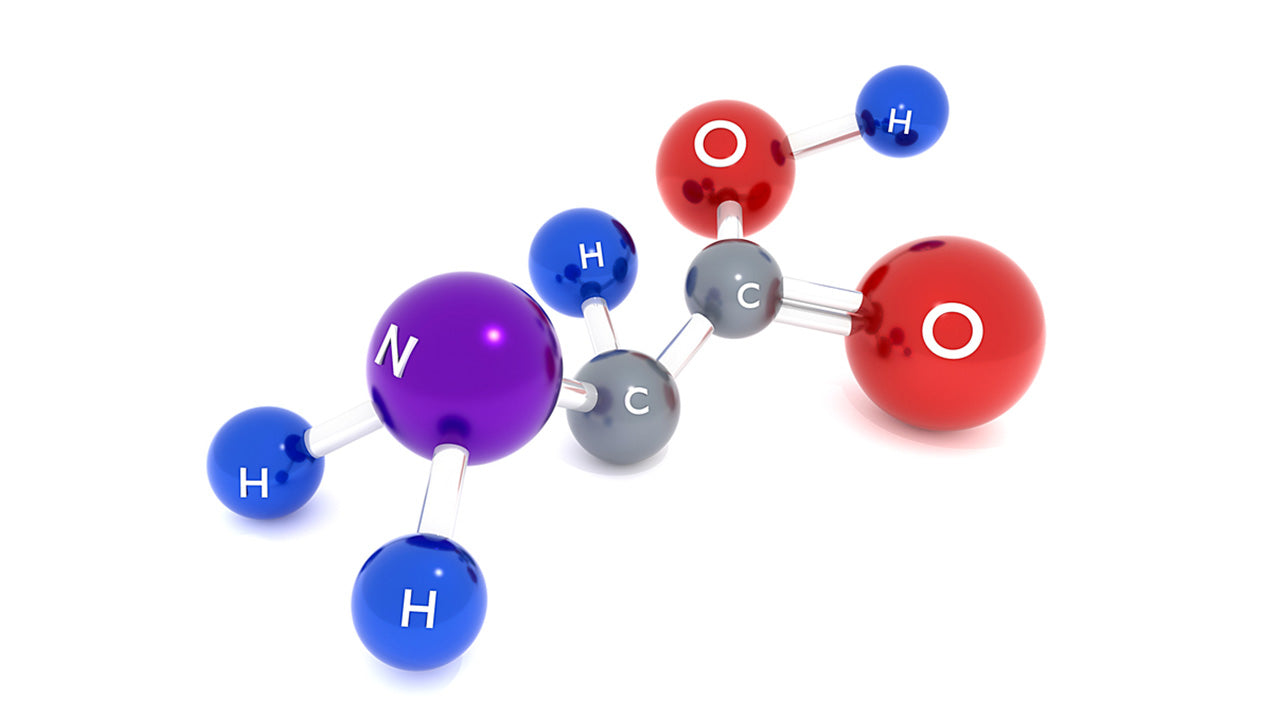Amino Acids and Muscle Protein Turnover: Keeping Your Muscles Strong and Healthy
 By: by Amino Science
By: by Amino Science

Muscle has always been recognized for its importance in mobility and physical activity, and there’s currently a newfound appreciation for the importance of maintaining muscle for better health outcomes. Likewise, there’s also a growing appreciation for the complex relationship that exists between amino acids and muscle tissue.
But before we proceed to discuss that relationship, let’s get comfortable with some key muscle terminology.
Three Components of Muscle Health
The process of building muscle (anabolism) is known as muscle protein synthesis, and the process of breaking down muscle (catabolism) is known as muscle protein breakdown. Muscle protein turnover refers to the cycle of muscle being made and broken down and then made again.
Here’s where amino acids come into the picture.
Amino acids are the building blocks of proteins that make up muscle. And when there’s not a plentiful supply of amino acids coming from your diet—whether from whole food sources or supplements such as whey protein or other forms of protein powder—your muscles will release amino acids during muscle protein turnover so they can be used as needed by other organs and tissues.
Muscle can therefore be thought of as the main reservoir of amino acids for the body.
And in combination with a high-protein diet and/or amino acid and protein supplementation, weight training usually increases both muscle mass and strength.
So, muscle health comes down to three key components:
- High-protein diet
- Essential amino acid (EAA) supplementation
- Regular weight training
Anabolic and Catabolic Stimuli
When we refer to anabolic stimuli, we’re talking about factors and lifestyle choices that promote the growth or synthesis of new muscle. These include:
- Dietary protein intake
- Exercise (particularly weight-bearing or resistance exercise)
- Anabolic hormones (such as growth hormone and testosterone)
We know for certain that amino acids, particularly EAAs, stimulate the growth of new proteins.
Factors that are catabolic, or promote muscle breakdown and loss, include:
- Low-protein diets
- Low-energy diets
- Illness and stress
During times of illness and stress, we have an increased need for amino acids to support immune system function and to respond to the actions of catabolic hormones that are released in response to stress.

Another Quick Lesson on Amino Acids and Muscle Protein
Muscles are made up of individual fibers constructed of proteins, and these proteins are made up of amino acids connected to one another in long strings of almost infinite variety.
Some amino acids are derived from dietary protein, but others are synthesized by the body via chemical reactions that occur in the liver and other select sites.
Amino acids that must be obtained from the diet are called EAAs, and amino acids that can be made in the body are called nonessential amino acids (NEAAs).
The Production of New Muscle Protein
Muscle proteins are assembled from amino acids using information encoded in our genetic material—deoxyribonucleic acid (DNA). The sequence of amino acids in a protein is unique and distinguishes one protein from another. But for protein synthesis to occur, all 20 “proteinogenic” (aka protein-creating) amino acids must be present.
Messenger ribonucleic acid (mRNA) is the nucleic acid that carries instructions from the nuclear DNA—the DNA within each cell’s nucleus—into the part of the cell where protein is synthesized (ribosome).
There’s also another type of RNA known as transfer RNA (tRNA). Transfer RNA carries amino acids to the proper site for protein synthesis. When protein synthesis is taking place, enzymes link tRNA molecules to amino acids in a highly specific manner.
Transcription is one of the first processes to occur in protein synthesis, and it refers basically to the creation of the RNA strands that carry the genetic code.
The genetic code is then transferred to an amino acid sequence in a protein through a process known as translation. During this process, the amino acids carried by tRNA molecules are positioned sequentially and linked together.
One by one, amino acids are added to the growing chain until a signal to stop is received. After the protein has been synthesized completely, it’s removed from the cell structure that makes the protein for both further processing and to perform its function.
While all of this might seem complicated, a simple way to think about muscle protein synthesis is to compare it to the construction of a building.
The DNA is basically the idea for the design of the building. The mRNA is the written plan or blueprint, and transcription is the process of writing up that plan. The charged tRNA and process of translation—or tRNA plus its amino acid—are the construction company that builds the product by “putting the bricks together.” And the protein is the final product—or completed building—ready to serve its function.

There are many detailed molecular studies of all the independent steps along these complicated biochemical pathways of muscle growth and breakdown, but these don’t always predict what will be observed in human beings. For example, mRNA may be produced to initiate protein synthesis, but if amino acids are not available, the protein cannot be made.
What’s the Deal with Muscle Protein Breakdown?
It’s easy to understand the importance of muscle protein synthesis, as that’s the metabolic basis for muscle building. But why do muscles need to be broken down as part of muscle protein turnover?
We’ve already learned that muscle protein breakdown is essential when other important tissues and organs are in need of a constant supply of EAAs. However, muscle protein breakdown also helps improve muscle function.
You see, muscle fibers become damaged during exercise and unable to generate the same contractile force as new fibers. Without the process of muscle protein turnover, our bodies wouldn’t be able to get rid of the older, damaged fibers (protein breakdown) and replace them with new, better functioning ones (protein synthesis).
In fact, accelerated muscle protein turnover can improve exercise performance even if total muscle mass does not change. This is because a heavy workout induces local inflammation due to the damaged muscle fibers. But the more rapid the muscle turnover, the more quickly the post-workout inflammation will subside.
Amino Acids and Muscle
EAAs are the most potent stimulators of muscle protein turnover. Without an adequate supply of these amino acids, muscle protein turnover is limited because there are not enough EAAs to maintain muscle protein synthesis at an accelerated rate.
In order to stimulate muscle protein turnover, since EAAs can’t be produced in the body, you must get them from your diet. However, it’s difficult to get enough EAAs from food alone. This is where a balanced EEA supplement can come in handy.
Amino acid supplements can help improve skeletal muscle function without increasing muscle mass—if that’s your goal.
For example, an endurance runner will improve muscle function and decrease inflammation by consuming EAAs after a workout without adding extra muscle weight.
However, if you're looking for strength gains and your goal is to increase muscle mass, then supplementing with an EAA powder is also a must. But to build muscle and add to the extra mass, you’ll want to be sure you’re consuming EAAs with sufficient calories from non-protein sources.
Whether you're interested in increasing muscle mass or muscle function, or simply want to grow old with as much ease and mobility as possible, supporting healthy muscle protein turnover is essential. And striving to achieve a balanced intake of EAAs each day will help ensure all these goals are within your reach.

Up to 25% off Amino
Shop NowTAGS: benefits
Join the Community
Comments (0)
Most Craveable Recipes




 833-264-6620
833-264-6620



















